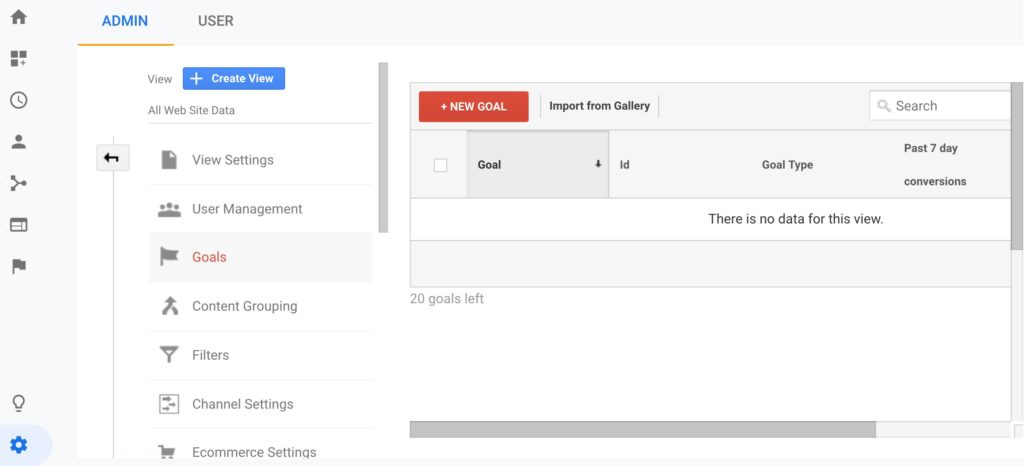Discovering What Data Is Google Analytics Goals Unable to Track
Discovering What Data Is Google Analytics Goals Unable to Track
Blog Article
Introducing the Blind Spots: Recognizing What Google Analytics Goals Can not Gauge
In the world of electronic analytics, Google Analytics stands as an effective device for monitoring and examining online user interactions. Recognizing what Google Analytics objectives can not gauge is essential for gaining a thorough sight of user behavior and interaction.
User Actions on External Platforms
Recognizing just how individuals engage on exterior systems is critical for enhancing online strategies. Outside platforms, such as social media networks, recommendation websites, and on-line discussion forums, play a substantial duty in driving traffic to a business's website. By assessing user actions on these systems, services can obtain beneficial understandings into the effectiveness of their advertising efforts and the choices of their target audience.
One trick element of user actions on external systems is the referral resource. By tracking where the customers are coming from, organizations can identify which platforms are driving one of the most traffic to their web site. This details can assist business assign their resources much more effectively, focusing on the systems that yield the best results.

Offline Conversions and Interactions
Examining individual behavior on external platforms provides important understandings right into on the internet techniques; nevertheless, taking into consideration offline conversions and communications is equally critical for an extensive understanding of a firm's total efficiency. Offline conversions, such as in-store acquisitions or phone questions, play a substantial function in many businesses' success.

Acknowledgment Beyond Last Click
When delving right into the realm of digital advertising analytics, it becomes necessary to look beyond the single touchpoint of the last click for a more detailed understanding of attribution. While Google Analytics offers beneficial understandings right into individual habits, depending exclusively on last-click acknowledgment can be limiting - what data is google analytics goals unable to track. Attribution models that exceed the last click supply a much more nuanced view of the consumer journey, taking right into account all the touchpoints that cause a conversion
Attribution past the last click allows marketing experts to appoint debt to different interactions along the conversion path, offering a more clear image of the performance of various marketing channels. By discovering multi-touch attribution designs such as straight, time degeneration, or Get More Information position-based attribution, companies can much better assign their advertising and marketing budget plans and enhance their methods for optimal influence.
Recognizing the influence of each touchpoint in the conversion procedure is essential for making notified choices and making the most of ROI. By welcoming acknowledgment past the last click, businesses can gain deeper insights into customer habits and tailor their advertising efforts extra effectively.
Cross-Device and Cross-Browser Monitoring

In a similar way, cross-browser tracking complements cross-device monitoring by recording individual habits as they switch click site between different internet browsers. Understanding how users interact with web sites on numerous internet browsers can help marketing experts enhance their on-line experiences to guarantee uniformity and capability across various platforms.
Qualitative Data and User Intent
Recognizing customer intent through qualitative data evaluation is important for establishing targeted electronic advertising methods that resonate with the needs and preferences of the target market. Qualitative data provides understandings into the 'why' behind user actions, dropping light on motivations, feelings, and preferences that measurable data alone can not capture. By assessing customer feedback, remarks, and communications, marketing professionals can uncover valuable info about customer intent, permitting them to tailor their messaging, content, and offerings to much better line up with what their audience is looking for.
Qualitative information also assists in comprehending the context in which users involve with an internet site or app. This contextual understanding enables online marketers to produce even more appropriate and individualized experiences, ultimately driving greater engagement and conversion prices. By delving into customer intent with qualitative data analysis, organizations can obtain a much deeper understanding of their target market, bring about much more efficient advertising techniques that meet individuals' expectations and requirements.
Final Thought
Finally, Google Analytics goals have constraints in determining customer habits on external systems, offline conversions, attribution past last click, cross-browser and cross-device tracking, and qualitative data associated to user intent. what data is google analytics goals unable to track. It is very important for services to be knowledgeable about these blind spots in order to supplement their data analysis with various other devices and methods to obtain a over here much more comprehensive understanding of their audience and enhance their general digital advertising and marketing approaches
By evaluating customer behavior on these platforms, organizations can get important insights into the performance of their marketing initiatives and the choices of their target audience.
Assessing user habits on exterior systems provides important understandings right into on-line techniques; nonetheless, considering offline conversions and interactions is similarly imperative for a comprehensive understanding of a firm's overall performance.In digital advertising and marketing analytics, relocating past last-click acknowledgment to explore cross-device and cross-browser tracking is necessary for acquiring a holistic understanding of user communications throughout numerous platforms and tools. By evaluating individual comments, comments, and communications, online marketers can uncover important info regarding customer intent, enabling them to tailor their messaging, web content, and offerings to better align with what their target market is seeking.
By diving into customer intent with qualitative data evaluation, organizations can get a much deeper understanding of their target audience, leading to more efficient marketing approaches that meet users' expectations and demands.
Report this page